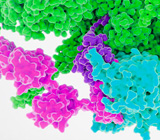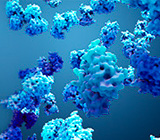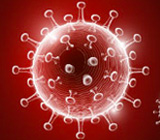-
REAGENT SERVICES
Hot!
-
Most Popular Services
-
Molecular Biology
-
Recombinant Antibody/Protein
-
Reagent Antibody
-
CRISPR Gene Editing
-
DNA Mutant Library
-
IVT RNA and LNP Formulations
-
Oligo Synthesis
-
Peptides
-
Cell Engineering
-
- CRISPR/Cas9 sgRNA
- CRISPR/Cas12a crRNA
- Prime Editing Guide RNA
- Base Editing Guide RNA
- HDR Templates
- gRNA + HDR Template Design Tools
- cGMP Guide RNA
- cGMP HDR Templates
- CRISPR/Cas Proteins
- CAR-T Knock-in Optimization Kit
- CRISPR Plasmids
- CRISPR gRNA Plasmid Libraries
- CRISPR Cell Lines
- Microbial Genome Editing
-
-
PRODUCTS
-
Most Popular Reagents
-
 Instruments
Instruments
-
Antibodies
-
ELISA Kits
-
Protein Electrophoresis and Blotting
-
Protein and Antibody Purification
-
Recombinant Proteins
-
Molecular Biology
-
Stable Cell Lines
-
Cell Isolation and Activation
-
 IVD Raw Materials
IVD Raw Materials
-
 Therapy Applications
Therapy Applications
-
Resources
-
- Pharmacokinetics and Immunogenecity ELISA Kits
- Viral Titration QC ELISA Kits
- -- Lentivirus Titer p24 ELISA KitHot!
- -- MuLV Titer p30 ELISA KitNew!
- -- AAV2 and AAVX Titer Capsid ELISA Kits
- Impurity Test ELISA Kits
- -- BSA ELISA Kit, 2G
- -- Cas9 ELISA KitNew!
- -- Protein A ELISA KitNew!
- -- His tagged protein detection & purification
- -- dsRNA ELISA Kit
- -- Endonuclease ELISA Kit
- COVID-19 Detection cPass™ Technology Kits
-
- Automated Maxi-Plasmid PurificationHot!
- Automated Mini-Plasmid PurificationNew!
- PCR Reagents
- S.marcescens Nuclease Benz-Neburase™
- DNA Assembly GenBuilder™
- Cas9 / Cas12a / Cas13a Nucleases
- Base and Prime Editing Nucleases
- GMP Cas9 Nucleases
- CRISPR sgRNA Synthesis
- HDR Knock-in Template
- CRISPR Gene Editing Kits and Antibodies
-
![AmMag™ Quatro Automated Plasmid Purification]() AmMag™ Quatro automated plasmid purification
AmMag™ Quatro automated plasmid purification
-
![Anti-Camelid VHH]() MonoRab™ Anti-VHH Antibodies
MonoRab™ Anti-VHH Antibodies
-
![ELISA Kits]() ELISA Kits
ELISA Kits
-
![Precast Gels]() SurePAGE™ Precast Gels
SurePAGE™ Precast Gels
-
![Quatro ProAb Automated Protein and Antibody Purification System]() AmMag™ Quatro ProAb Automated Protein and Antibody Purification System
AmMag™ Quatro ProAb Automated Protein and Antibody Purification System
-
![Target Proteins]() Target Proteins
Target Proteins
-
![AmMag™ Quatro Automated Plasmid Purification]() AmMag™ Quatro automated plasmid purification
AmMag™ Quatro automated plasmid purification
-
![Stable Cell Lines]() Stable Cell Lines
Stable Cell Lines
-
![Cell Isolation and Activation]() Cell Isolation and Activation
Cell Isolation and Activation
-
 IVD Raw Materials
IVD Raw Materials
-
![Quick
Order]() Quick Order
Quick Order
-
![Quick
Order]() Quick Order
Quick Order
- APPLICATIONS
- RESOURCES
- ABOUT US
- SIGN IN My Account SIGN OUT
- REGISTER

![Amino Acid Code Amino Acid Code]()
Biology Terms Dictionary
This Biology terms dictionary provides query services for biology and biochemistry terms. Please enter the biology or biochemistry terms you want to search.
List by Alphabet: A B C D E F G H I J K L M N O P Q R S T U V W X Y Z
Bacterial Protein Expression
Introduction to Bacterial Protein Expression
Bacterial protein expression refers to the production of recombinant proteins using bacterial host systems, predominantly Escherichia coli (E. coli). This method is widely used due to its simplicity, rapid growth, low cost, and the ability to produce high yields of proteins. However, bacterial expression systems also present challenges, such as improper protein folding, the absence of post-translational modifications, and the formation of inclusion bodies. Advances in genetic engineering and optimization strategies have helped address many of these limitations, making bacterial systems indispensable in research, diagnostics, and industry.
Mechanisms of Bacterial Protein Expression
The bacterial expression of proteins involves several steps, starting from the construction of recombinant vectors to the final extraction and purification of the target protein. Each step plays a critical role in ensuring the yield, quality, and activity of the expressed protein.
-
Vector Design and Gene Cloning
The gene encoding the target protein is inserted into a plasmid expression vector, which typically includes:
- Inducible promoters (e.g., lac operon or T7 promoter) to control protein expression.
- Selection markers (e.g., antibiotic resistance genes) to ensure only cells containing the plasmid survive.
- Affinity tags (e.g., His-tag or GST-tag) to facilitate purification.
Codon optimization is often performed to ensure compatibility with the bacterial host’s translation machinery, thereby enhancing expression efficiency and protein yield.
-
Bacterial Strain Selection
Different bacterial strains can be used to optimize protein yield and functionality:
- BL21(DE3): The most common strain for expressing recombinant proteins due to its compatibility with the T7 RNA polymerase system.
- Rosetta: Engineered to enhance the expression of proteins with rare codons.
- Lemo21(DE3): Allows fine-tuning of expression levels to reduce the formation of inclusion bodies.
-
Inducing Protein Expression
Protein expression is typically induced by adding an inducer such as IPTG (Isopropyl β-D-1-thiogalactopyranoside), ensuring that protein production occurs only at a specific growth phase and reducing potential toxicity to the host cells. Inducible systems ensure that protein production occurs only at a specific growth phase, thus reducing potential toxicity to the host cells and improving overall protein yield.
-
Folding and Inclusion Body Formation
Many recombinant proteins expressed in bacteria tend to misfold, resulting in the formation of inclusion bodies—insoluble protein aggregates. Inclusion bodies require solubilization and refolding to recover functional proteins. Solutions to enhance proper folding include:
- Co-expression with chaperones (e.g., GroEL, DnaK).
- Lowering the induction temperature to reduce aggregation.
-
Cell Lysis and Protein Extraction
After expression, the bacterial cells are lysed to release the target protein. Common lysis methods include:
- Sonication: Uses ultrasonic waves to disrupt the cell membrane.
- Chemical lysis: Employs detergents and enzymes (e.g., lysozyme) to break down the cell wall.
Lysis buffers often include protease inhibitors to prevent protein degradation during extraction.
-
Purification of Recombinant Proteins
Affinity chromatography is the most commonly used method for purifying bacterial proteins. For example:
- His-tagged proteins bind to nickel or cobalt resins.
- GST-tagged proteins are purified using glutathione resin.
Following affinity purification, further steps such as ion-exchange chromatography or size-exclusion chromatography are used to achieve higher purity and remove contaminants.
Applications of Bacterial Protein Expression
- Industrial Enzymes: Bacteria are used to produce enzymes such as amylases, lipases, and proteases for applications in food processing, detergents, and biofuels.
- Biopharmaceuticals: Some therapeutic proteins, like insulin and interferons, are produced using bacterial expression systems due to their low cost and scalability.
- Research Reagents: Bacterial expression is essential for generating proteins used in laboratory techniques such as enzyme-linked assays (ELISA), Western blotting, and X-ray crystallography.
- Vaccines and Antigens: Bacterial expression systems are employed to produce antigens for vaccine development, such as recombinant hepatitis B antigens.
- Toxic Protein Studies: Inducible bacterial systems allow for the controlled production of toxic proteins, enabling the study of microbial pathogenesis and toxin biology.
Tools and Services for Bacterial Protein Expression
- GenScript’s Protein Expression Services: GenScript provides custom bacterial protein expression services, offering optimized strains and purification strategies tailored to research and industrial needs.
- Affinity Resins and Chromatography Kits: GenScript offers a variety of reagents, including His-tag purification kits, to facilitate the efficient recovery of recombinant proteins.
- Inclusion Body Refolding Services: GenScript also supports the solubilization and refolding of proteins from inclusion bodies, ensuring the recovery of functional proteins.
Challenges and Future Directions
Despite the advantages of bacterial expression, several challenges persist. Misfolding and aggregation remain significant concerns, especially for complex or eukaryotic proteins. Additionally, post-translational modifications (PTMs) required for therapeutic proteins cannot be achieved in bacterial systems. Future directions include:
- Engineering bacterial strains to improve protein folding and minimize aggregation.
- Developing hybrid systems, such as bacterial-yeast co-expression, to leverage the strengths of multiple hosts.
- Using AI-driven protein design to predict optimal expression conditions and avoid aggregation.
- Advances in synthetic biology will also enhance the design of bacterial systems, making them more robust for producing complex proteins and biopharmaceuticals.
Conclusion
Bacterial protein expression remains a cornerstone of biotechnology, offering a cost-effective and scalable platform for producing recombinant proteins. Despite challenges such as protein misfolding and the lack of PTMs, advances in genetic engineering and strain optimization continue to improve expression efficiency and protein quality. As new technologies emerge, bacterial systems will play an even greater role in enzyme production, research, and biopharmaceutical development.
- Tags:
- Protein
Related Biology Tools
-
GenSmart™ Codon Optimization
GenSmart Optimization is a free online tool for performing codon optimization to improve gene expression. GenScript's patented algorithms are integrated into the tool to optimize the computing capability of high-performance sequence generation.
-
DNA Construct Design Tool
GenSmart™ Design is a free online DNA construct design tool developed by GenScript. GenSmart™ Design has two design modules, the Create Construct module for individual plasmid design and the Create Library module for DNA library design.
-
Codon Frequency Tables
This online tool shows commonly used genetic codon frequency table in expression host organisms including Escherichia coli and other common host organisms.
Service and Products

Protein Expression
GenScript recombinant protein and rAb services provide high quality recombinant proteins and rAbs for a variety of downstream research applications.

Bacterial Expression
One-stop service from Sequence to Protein starting from $1600, 4 weeks.

Insect Expression
GenScript's BacuVance baculovirus expression system was developed by our in-house team of scientists for virus production and expression of recombinant proteins from baculovirus-infected insect cells.

Mammalian Transient Expression
Proprietary High Density (HD) expression system, enhance the protein yield up to 100 fold, achieve antibody titers up to 3 g/L.

Reagents for COVID-19 Research
Gram level, ready to ship RBD proteins, ACE2 assay cell lines and pseudovirus.
-
Top Search
-
Hot Glossary
-
Antibody
If you know of any terms that have been omitted from this glossary that you feel would be useful to include, please send detail to the Editorial Office at GenScript: website@genscript.com
If your term is adopted, we will send 1,000 EzCoupon points to your GenScript account.
-





































